Do you suffer from shin splints? If so, you’re not alone. Shin splints are one of the most common injuries among runners. In this blog post, we will outline the top 10 stretches that can help relieve shin splints. These stretches are easy to do and can be performed anywhere, without any special equipment. So if you’re looking for relief from your shin splints, be sure to give these stretches a try!
Contents
Understanding Shin Pain
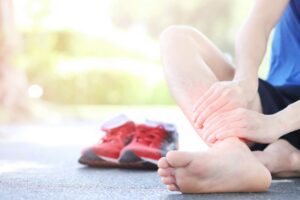
Shin splints are a common condition among runners and other athletes, characterized by pain in the front of the lower leg. Shin splints come from repetitive stress along the shin bone, resulting in inflammation and pain. The medical term for this condition is medial tibial stress syndrome or MTSS. While shin splints can occur with any strenuous exercise, they are most common in running.
The symptoms of it are as follows:
- Pain, usually along the front of the shin bone
- Tenderness and swelling along this area
- The feeling of burning, aching, or soreness in the affected region
Although there is no definitive cause of shin splints, there are several risk factors that can increase your chances of developing this. You can do some stretches to help relieve this painful condition.
10 Best Stretches For Shin
Shin’s pain is really hurtful and causes a lot of discomfort. Not only do you feel lightheaded, but also your stride is affected as well as your overall gait. If left untreated, it could take months to heal.
But luckily for you, there are some simple and easy stretches that you can do which will help ease the pain and discomfort caused by shin splints.
Standing Hamstring Stretch
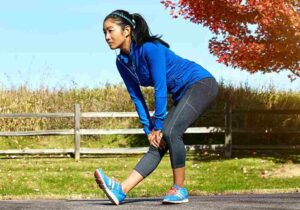
This stretch is one you can do right at home. To do this,
- Stand with your feet slightly apart and your toes pointing forward.
- Slowly bend forward from your hips while keeping your back straight until you feel a slight pull in the back of your leg.
- Hold for 30 seconds, then release
- Repeat 3 times on each side.
Calf Stretch
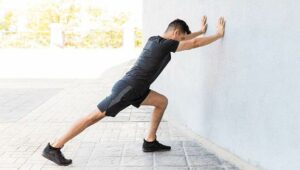
Another stretching technique that is simple, yet effective at relieving shin pain is to:
- Stand with your hands against a wall and lean forward.
- This will help stretch the calf muscles out, which in return can relieve some of the pressure on your shins.
- Repeat
Seated Calf Stretch
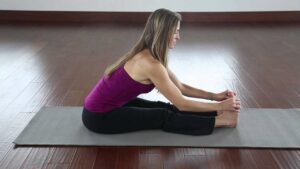
If you are having trouble reaching your feet to stretch, then this is a good alternative.
- Sit down and put the ball of one foot on top of the other knee.
- Use your hands to slowly move forward until you feel a light pull in your calf.
- Hold for 30 seconds, and switch legs
- Repeat 3 times on each side.
Towel Stretch
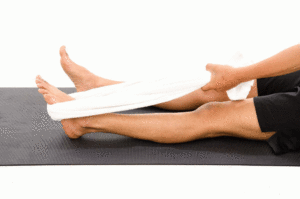
Another stretching technique that can be done at home is the simple towel stretch.
- Simply place a rolled-up towel behind your foot with your toes on top of it.
- Then use both hands to pull the towel until you feel a light stretch in your calf.
- Hold for 30 seconds, and switch legs
- Repeat 3 times on each side.
Toe Flexor Stretch
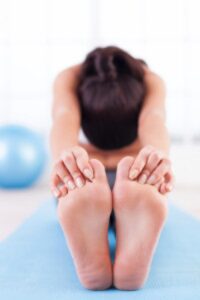
For this stretch, you will need a chair or table and a towel.
- Sit down with your feet flat on the floor.
- Then take hold of the towel (optional) with both hands and curl your toes to grab it.
- Hold for 30 seconds then release.
- Repeat 3 times on each foot.
Foam Roller Stretch

One of the best ways to relieve shin splint pain is by using a foam roller.
To do this, simply:
- Place the foam roller on the floor.
- Position your shins so that they are resting on top of it.
- Then roll back and forth for 1-2 minutes.
- Repeat 2-3 times per day.
Toe Stretch
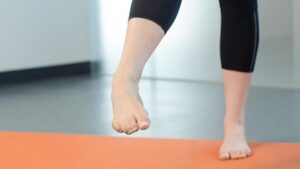
The toe stretch is a simple stretch that you can do in just a few seconds.
- Simply stand up straight with your feet together
- Slowly lift your big toe off the ground while keeping the other toes down.
- Hold for 30 seconds, then switch.
- Repeat with your other foot.
Shin Stretch
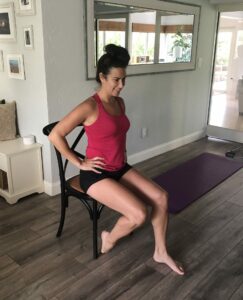
The shin stretch is a great way to gently stretch out the muscles in the front of your leg.
- Begin by standing up straight with one foot placed on a chair or bench above the knee.
- Then slowly bend forward at your hips until you feel a light pull in the front of your leg.
- Hold for 30 seconds and then switch legs.
- Repeat 3 times on each side.
Do-Drop Stretch

This stretch is great because it targets not only the front of your leg but also the back as well. To do this,
- Stand with one foot forward and the other back.
- Slowly bend forward at your hips with both knees slightly bent.
- Then allow the back heel to sink down until you feel a light pull in the calf.
- Hold for 30 seconds.
- Repeat 3 times on each leg.
Reverse Lunge
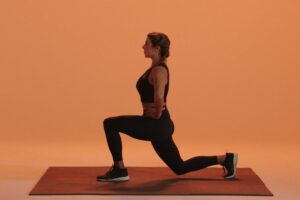
The reverse lunge is a bit more advanced, but it’s a great way to stretch both the front and back of your legs. To do this,
- Stand with your feet together and take a big step backwards with one leg.
- Lower your hips until both knees are at 90-degree angles.
Doing any of these stretches regularly can help to reduce pain and discomfort from shin splints, making it easier to recover from this common injury.
Benefits Of Doing Shin Stretches
Shin stretches have a list of benefits that you can expect from them. Let us discuss them.
1. Shin stretches can help to improve your balance and coordination.
2. Shin stretches lift the circulation of lymph, which enhances the removal of waste products from your body and also boosts your immune system.
3. Stretching helps in relaxing knots (also known as trigger points) that are a result of tense muscles, thus providing you pain relief.
4. Shin stretches can also increase your range of motion and flexibility, which helps in preventing injuries as well.
5. They are also great for reducing stress levels, as they help you to balance your mind and body better by relaxing the muscles.
6. Shin stretches can provide relief from plantar fasciitis, which is a common cause of shin splints.
7. They can also improve circulation in your muscles, thus helping to reduce inflammation and swelling.
8. Shin stretches help to loosen up the tightness in the connective tissues around your shins, which reduces pain and stiffness too.
9. Since they stretch out the tendons around your shins, they can also help to relieve any pain that you are suffering from due to tendonitis.
10. Shin stretches can be done easily at home, and they do not require any special equipment or tools. So you can easily do them on a regular basis to keep your shin muscles healthy and strong.
Shin stretches are an excellent way to help relieve the pain and discomfort associated with shin splints. They can help to improve your balance, flexibility, coordination, circulation, immune system function, and stress levels. Whether you suffer from plantar fasciitis or tendonitis in your shins, doing regular stretches can provide pain relief by loosening up tight connective tissues, boosting circulation, and improving flexibility. And best of all, it is easy to do shin stretches right at home with no special equipment or tools required. So why wait? Start stretching today and keep your shin muscles healthy and strong!
Conclusion
In conclusion, shin stretches are a great way to help relieve shin splints. Whether you are suffering from mild or severe symptoms, there is always something you can do. From simple bends and stretches to more advanced poses, there are many options available to help alleviate the pain. Try these top 10 stretches today and find relief from your shin splints!
If your pain does not go away with these stretches, consult with your doctor to figure out what the underlying issue might be.
Physical Therapy help patients recover from pain. If you’re experiencing Back pain, Shoulder pain, Knee pain, Neck pain, Elbow pain, Hip pain, or Arthritis pain, a physical therapist at MantraCare can help: Book a physiotherapy session.


